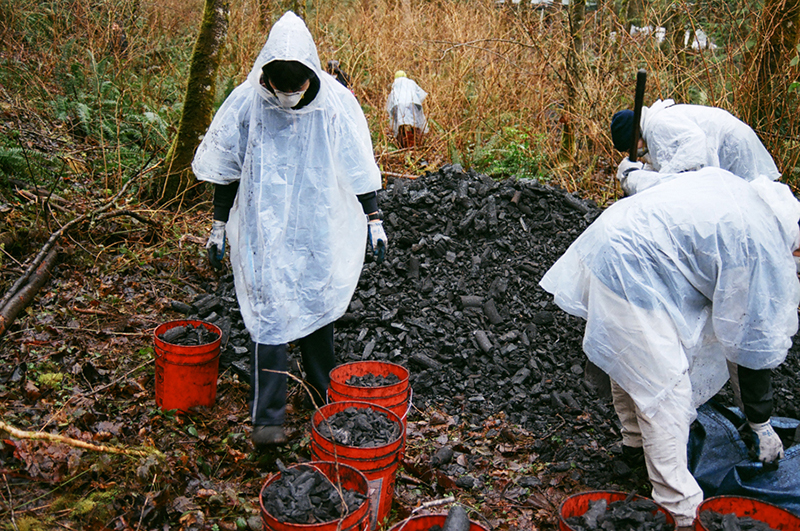


Travel 15 miles east of Seattle along Interstate 90 and the glaciated smoothness of the Puget Sound lowlands gives way to the foothills of the Cascade Range. Among these gentle slopes lies Cougar Mountain, a relatively anonymous topographic feature encircled by unremarkable suburban development. Cougar Mountain has the sort of overwhelmingly biotic character that is only made possible by the 60+ inches of rain this area receives every year. Although the forest that blankets Cougar Mountain feels intensely primeval, it is not.
From 1863 to 1963, Cougar Mountain and its surrounding landscape were the site of intensive industrial operations based around the extraction of coal and timber. Old-growth forests were clear-cut, and a vast network of mine tunnels was dug into the mountainside. Rail lines were laid and whole towns sprang up in the wake of these activities.
The coal at Cougar Mountain is relatively energy-poor, and the mines here were often unprofitable. By the middle of the 20th century, suburban housing became a more lucrative use for this land. Ironically, intensive mining made much of Cougar Mountain too unstable to build upon, and, after a period of fierce public advocacy, the mountain became a 3,100-acre wilderness park.
Today, a diverse ecology has repopulated the once-denuded mountain, and there is little to indicate that coal was ever mined here. A few moss-covered mine shafts and the occasional sinkhole are the only immediate reminders of the area’s industrial history. However, dig a few inches into the forest duff and you will find coal.
Finding coal in the rhizosphere of a robust forest is the sort of uncanny juxtaposition that characterizes the Anthropocene. It feels unnatural. Yet, this oft-maligned fossil fuel is organic, and the fragmented remains of coal seams found here are essentially irrelevant to the health of this post-industrial ecosystem. Damage from the mining on Cougar Mountain persists, but it has no visual registration. Some 29,930,000 tons of CO2 were released into the atmosphere by burning all of the coal mined at Cougar Mountain.
Biochar is a charcoal-like material much heralded in environmental circles for its potential to sequester massive amounts of carbon in the soil and increase the availability of soil-borne nutrients. To produce it, organic matter – generally wood – is placed in an oven-like structure and heated in a low-oxygen environment in a process known as pyrolysis. When this process is complete, organic matter is transformed into stable, solid carbon. Biochar’s many proponents claim that the material will take nearly 10,000 years to fully re-enter the carbon cycle. As a material, biochar is nearly identical in appearance to the coal that was mined from Cougar Mountain for over a century.
Black Forest (29,930,000 tons) engages with the narrative of material transference that defines this site. A great deal of matter was taken from this mountain, spread throughout the planet and never returned. Labor—the human movement of organic material—fundamentally altered Cougar Mountain, and this project re-engages labor to again alter the site’s trajectory. Over the course of 30 months, 50,000 lbs. of biochar was produced, and volunteer workers carried this tonnage across forested slopes and spread it over several acres of forest floor. The biochar is left here in perpetuity until it decomposes thousands of years from now. The outcome—already lost to the forest’s growth—is thus part of a long-term process that supersedes any object quality the project possesses.
Photographs by Emma Rogers and Eirik Johnson





